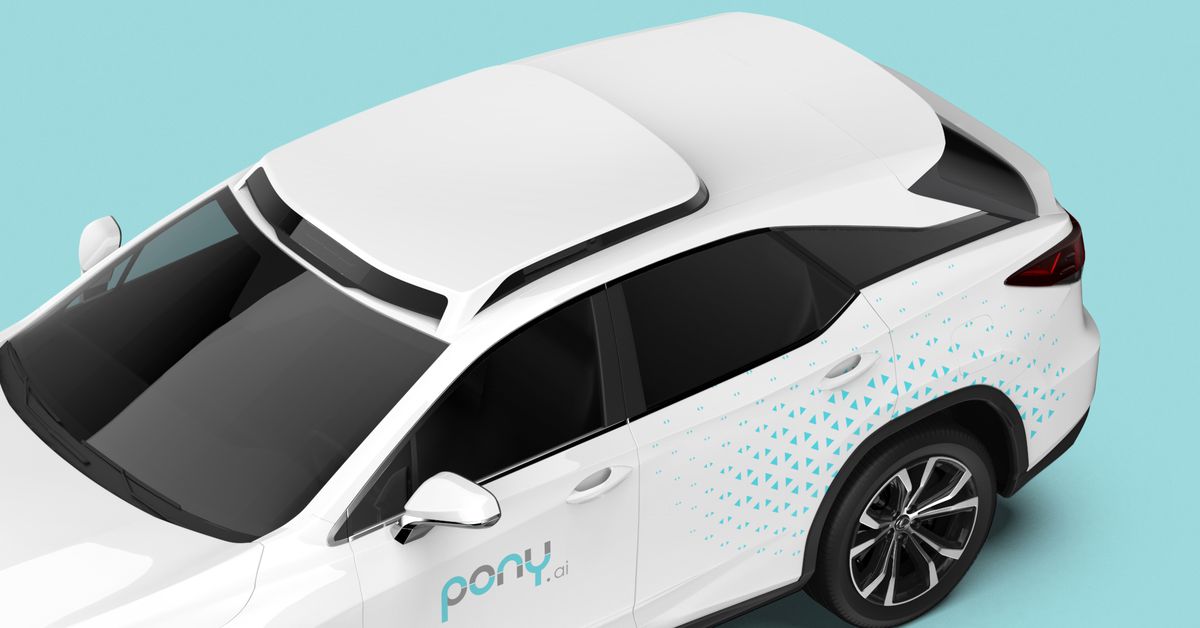Pony.ai unveils its next-gen robotaxi with LIDAR from Luminar
Source: The Verge added 10th May 2021Pony.ai’s next-generation robotaxi is distinctive because it appears to be missing the cone-shaped LIDAR sensor perched on the roof that’s typical of most autonomous vehicles. That’s because the startup, which is based in Silicon Valley and Guangzhou, China, is teaming up with Luminar to use the fast-growing LIDAR company’s sleek new sensors that are more flush with the vehicle’s roof.
The new vehicles with Luminar’s LIDAR sensor won’t be up and running until 2022, but Pony.ai founder and CEO James Peng said preparation was already underway for mass production of the next-gen robotaxi. After testing the vehicle next year, Peng said it will be ready for the company’s robotaxi customers in 2023. Pony.ai currently offers limited ride-hailing in its autonomous vehicles in five markets: Irvine and Fremont in California; Beijing, Shanghai, and Guangzhou in China.
Pony also announced that it has driven more than 5 million kilometers (3.1 million miles) across an operational domain of 850km and has provided over 250,000 robotaxi rides. The startup claims to be the first company to launch an autonomous ride-hailing operation and offer self-driving car rides to the general public in China.
The company was also recently approved to test its fully autonomous vehicles, without safety drivers behind the wheel, on public roads in California. Peng said Pony was currently seeking approval to include those vehicles in its robotaxi service in California. “We are actually at the final stage of getting the approval for travelers,” he said.
LIDAR, the laser sensor that sends millions of laser points out per second and measures how long they take to bounce back, is seen as a key ingredient to autonomous driving. Peng said that Pony would use four of Luminar’s Iris sensors, two on the roof and two more on each side of the vehicle, in order to “generate a very high resolution LIDAR image for our autonomous driving vehicles.”
Luminar says that its Iris LIDARs have a maximum range of 500 meters (1,640 feet), including 250-meter range with less than 10 percent reflectivity. Luminar’s sensors are also distinctive from most other LIDAR sensors, which were once famously described as looking like “spinning Kentucky Fried Chicken buckets.” In contrast, Iris is only about 10 centimeters tall. Austin Russell, founder and CEO of Luminar, described it as a “slim form factor that’s meant to be seamlessly integrated into the vehicle design.”
Pony.ai was valued at $3 billion after a $400 million investment from Toyota last year. Luminar, which is based in Florida, went public last year via a reverse merger with a special acquisition company, or SPAC. That merger valued the company at approximately $2.9 billion in “implied pro forma enterprise value,” with an equity value of $3.4 billion at closing. In addition to Pony, Luminar is also working with Airbus, Volvo, Audi, and Toyota Research Institute.
brands: Audi First It Key Million New other Pro Silicon Sleek Value WAS media: 'The Verge' keywords: Sensor Startup
Related posts
Notice: Undefined variable: all_related in /var/www/vhosts/rondea.com/httpdocs/wp-content/themes/rondea-2-0/single-article.php on line 88
Notice: Undefined variable: all_related in /var/www/vhosts/rondea.com/httpdocs/wp-content/themes/rondea-2-0/single-article.php on line 88
Related Products
Notice: Undefined variable: all_related in /var/www/vhosts/rondea.com/httpdocs/wp-content/themes/rondea-2-0/single-article.php on line 91
Warning: Invalid argument supplied for foreach() in /var/www/vhosts/rondea.com/httpdocs/wp-content/themes/rondea-2-0/single-article.php on line 91
